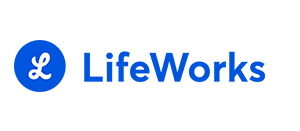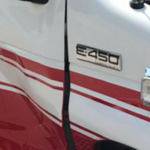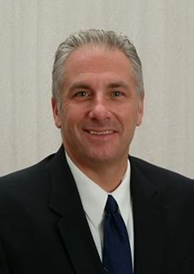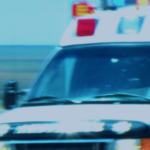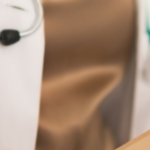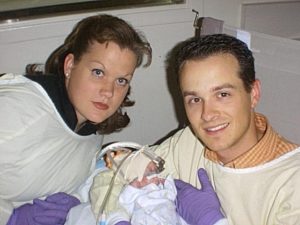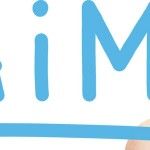LifeWorks October Feature: Work-Life Balance and Productivity
October Feature: Work-Life Balance and Productivity
Ten Tips for Fitting Work and Life Together
Would you like to move beyond feeling stressed or overwhelmed by your personal and work responsibilities? Or learn how to achieve personal and professional success on your own terms? “Knowing how to manage the way work and life fit together is a modern skill set we all need to succeed,” says Cali Williams Yost, an internationally recognized flexible workplace strategist and author of the books Tweak It: Make What Matters to You Happen Every Day and Work+Life: Finding the Fit That’s Right for You. Here are Yost’s 10 strategies:
- Remember that work-life fit is unique for each of us. “Simply put, there is no work-life balance or perfect 5050 split between your work and your personal life,” Yost says. “If you do happen to hit a balance, you can’t maintain it because your realities are always changing, personally and professionally.” There’s also no “right way” to achieve a good work-life fit. Your goal is to find your unique, ever-changing fit, the way your work and personal realities fit together day-to-day and at major life transitions. Don’t compare yourself to others. Find the fit that’s right for you.
It’s also important to keep in mind that during major life changes — like becoming a parent, caring for an aging relative, relocating with a partner, going back to school, or easing your way into retirement — you may find yourself rethinking how you define success related to money, prestige, advancement, or caregiving. Throughout life, you may need to align and adjust your work and personal realities so they match with your vision and goals for the future. - Harness the power of small actions or “tweaks”. Even small actions can have positive and lasting effects. When you’re feeling overloaded, for example, commit to taking two or three small but meaningful steps toward a better work-life fit. Plan a long weekend away with friends. Clean out your hall closet. Take an online class to learn a new skill. Then do it again and again. Small actions can have a big impact on your sense of well-being and control. To get started, check out more than 200 small, doable get-started actions suggested by 50 work, career, and personal life experts in Yost’s book Tweak It.
- Create a combined calendar and priority list. On top of a busy job and home life, how will you fit everything else into your schedule? There’s exercise, eating well, vacation, sleep, career development, time with family and friends, caregiving responsibilities, and just general life maintenance. You can’t do it all. But you can be more intentional and deliberate about how you spend your time.
First, pull together all your work and personal to-dos and priorities into one combined calendar and list. This will help you determine how you want to prioritize the tweaks — small, meaningful work, career, and personal actions and priorities — to add to your work-life fit. For example, tweaks might include planning all meals and shopping for your groceries on Sunday or getting to exercise class every Tuesday and Saturday. Or they might include researching a vacation one afternoon, going to the movies with your sister, or attending a networking event. Building actions into your schedule makes it far more likely they’ll happen. And you’ll feel better as a result. - Take care of yourself in small ways. Small changes can make a big difference in how you feel. Manage stress during the day by closing your eyes for 15 seconds and taking a few deep breaths. Try to eat more healthfully by adding a vegetable to two of your meals during the day. Turn off the television and your electronic devices an hour before you go to bed to help you get the rest you need.
- Preview a skill online before you pay to take a class. In a rapidly changing world, all of us need to keep updating our skills to meet new work and other realities. But going back to school can be expensive and time consuming. Before you invest a substantial amount of money in a class, try to preview a skill online. Watch or listen to any of the hundreds of thousands of videos or podcasts on an infinite number of topics that you can preview by downloading or streaming them. Watch them while you’re commuting, or listen to them while you walk. If you want or need more help than the video or podcast provides, invest in a class
- Collect ideas for vacations — then take one. Taking a break to reenergize is more important than ever in our on-the-go world. And many people don’t take vacations just because they don’t know where to go. It takes some research to find a destination that you can afford, and some of us don’t do this until it’s too late. To get inspired, keep a jar or small box where you can store vacation ideas. Every time you hear a friend or relative talk about a wonderful vacation, write down what appeals to you about it and put it there. When you read an article about a place that sounds interesting, put that in the box or jar, too. Once a year, pick a destination from all of the vacation ideas you’ve accumulated.
- Get things done while you’re enjoying family and friends. Cook dinner with your kids. When you prepare a meal together, you’re also spending time together. Take a walk with your close friend before work or a tae kwon do class with your partner on the weekend. You’ll be exercising while spending quality time together. At holiday times, plan a cookie exchange and donate some of the cookies to a women’s shelter.
- Have 10 technology-free minutes each day with your children. Give the kids time when you aren’t distracted by electronic gadgets. Sit on the floor and do a puzzle. Ask teenagers how their day went, and just listen. Check your email only at certain times of the day, so you aren’t always on it when children need you. When you’re on the phone, turn around and face away from your computer so you aren’t distracted by email. Looking away from the screen will force you to pay attention to the person you’re talking with.
- Plan for future caregiving responsibilities. Get a head start if you’re taking care of a grandparent or may be caring for a parent or other relative in the future. Sit down with the adults in your life who may require care. Try to clarify what they want, understand their financial resources, and come up with a plan for meeting their needs and wishes. Try to include in the meeting any family and friends who form a broader network of care, so you don’t have to do it all on your own. Don’t wait for a crisis.
- Keep on top of everyday maintenance. Clean as you go, so the work doesn’t pile up. Put a load of laundry in the washing machine in the morning before you leave for work, and put it in the dryer when you get home. Keep a small bucket of cleaning supplies in the bathroom, and wipe down the shower, mirror, and toilet every morning. Set a timer for 10 minutes each weekend and assign each member of your family a task — vacuuming, dusting, straightening up. Check the owner’s manual of your car for the recommended maintenance schedule and write it on your calendar.
For more tips like these, listen to the recording Fitting Work and Life Together on the LifeWorks platform.
Free, confidential counseling for employees of AAA member organizations.
LifeWorks is your employee assistance program (EAP) and well-being resource. We’re here for you any time, 24/7, 365 days a year, with expert advice, resources, referrals to counseling, and connections to specialists including substance abuse and critical incident stress management professionals. If you could benefit from professional help to proactively address a personal or work-related concern, you can turn to LifeWorks.
- Counseling is available at no cost to you. (Up to three sessions per issue.)
- To meet individual needs and preferences, counseling is available face-to-face AND live by video.
- All our counselors are experienced therapists with a minimum Master’s degree in psychology, social work, educational counseling, or other social services field.
Call LifeWorks, toll-free, 24/7, at 800-929-0068.
Visit us online at login.lifeworks.com or by
mobile app (username: theaaa; password: lifeworks)

